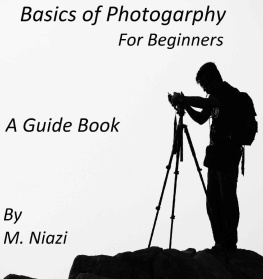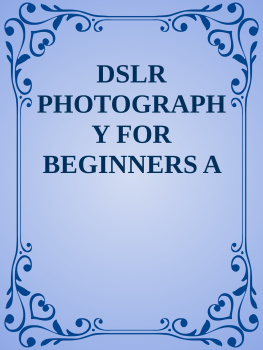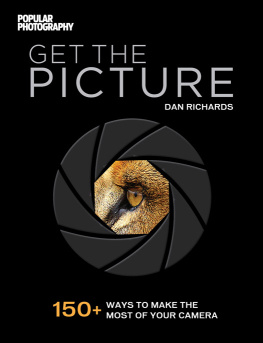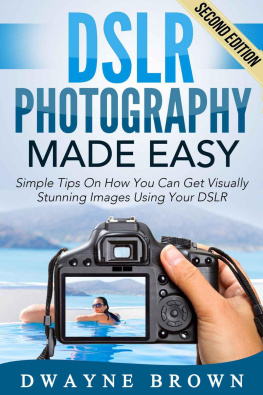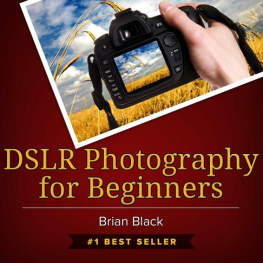M. NIAZI - Basics of Photography: For Beginners
Here you can read online M. NIAZI - Basics of Photography: For Beginners full text of the book (entire story) in english for free. Download pdf and epub, get meaning, cover and reviews about this ebook. year: 2018, genre: Children. Description of the work, (preface) as well as reviews are available. Best literature library LitArk.com created for fans of good reading and offers a wide selection of genres:
Romance novel
Science fiction
Adventure
Detective
Science
History
Home and family
Prose
Art
Politics
Computer
Non-fiction
Religion
Business
Children
Humor
Choose a favorite category and find really read worthwhile books. Enjoy immersion in the world of imagination, feel the emotions of the characters or learn something new for yourself, make an fascinating discovery.
Basics of Photography: For Beginners: summary, description and annotation
We offer to read an annotation, description, summary or preface (depends on what the author of the book "Basics of Photography: For Beginners" wrote himself). If you haven't found the necessary information about the book — write in the comments, we will try to find it.
Basics of Photography: For Beginners — read online for free the complete book (whole text) full work
Below is the text of the book, divided by pages. System saving the place of the last page read, allows you to conveniently read the book "Basics of Photography: For Beginners" online for free, without having to search again every time where you left off. Put a bookmark, and you can go to the page where you finished reading at any time.
Font size:
Interval:
Bookmark:
Introduction
Here we are going to have a small idea about the basic features of photography with DSLR. After reading this handbook you will be able to click good photographs not only with your DSLR but also from your smartphone camera. If you have bought a DLSR camera start using it first. Photography is not about kind of camera you are using. A good photograph can be click with any kind of camera. A good photographer click it with his mind first then with the camera. You have to be imaginative and creative. To start to think like a photographer you have to click as many photo as you can, weather a useless photo or a good photo and try various angles to shoot for the same object. You have to practice more and more. Look for beauty in everything everywhere. Start with your home. Click photo of your TV, Fridge, Bathtub, Bathroom, Kitchen, Garden area, Roof, your pet, children, your dining area, closet etc. Than get up early (before sunrise) once in a week wear your sports shoe and track suit go outside on the streets near your place. Look for shops, trees, sidewalks, roads, architectures, street lights, sign boards, patterns, shapes, vehicles, people, culture, smog, birds, etc. Note every single detail on streets, imagine it, think it and then click it.
Basics of Photography with DSLR
What is DSLR camera?
In 1991 the first DSLR camera was introduced. DSLR stands for digital single lens reflex. In a DSLR camera mirrors inside the camera deflect the light coming through the lens into an optical view finder. There is a sensor behind the mirror. When the shutter button is pressed the mirror inside the camera flips up causing the light to fall on the sensor. When light falls on the sensor the image is captured. This reflex design is what differentiates a DSLR camera from other cameras. Also DSLR allow lens interchangeability .

What is a Sensor?
The soul of a digital camera is its sensorto determine image size, resolution, low-light performance, depth of field, dynamic range, lenses, and even the cameras physical size, the sensor is key.
An image sensor is a solid-state device, the part of the cameras hardware that captures light and converts what you see through a viewfinder or LCD monitor into an image. Think of the sensor as the electronic equivalent of film. With film cameras, you could choose from hundreds of film brands, each with its unique and identifiable characteristics. With digital cameras, much of that technology is built into the hardware, and you can apply special film like effects later with softwar e .
The sensor size affects many factors in your images and the functions of your camera body. It has a major impact on the quality of your image, how your lens functions, and how it performs in low light condition. In coming pages you will learn how sensor size affects the focal length.
In todays market, sensors are available in two types: CCD and CMOS. CCD, or Charged-Couple Device, is used in almost all point and shoot cameras and in numerous digital SLR cameras. CCD sensors produce high quality images, although cameras equipped with this sensor tend to be more costly and consume more power than other types. A CMOS sensor is larger than a CCD sensor so its surface is capable of capturing more light. As a result, CMOS sensors are more sensitive and produce images higher in quality compared to CCD sensors. CMOS sensors are easier and less costly to manufacture and use less power than CCD s .

Basic Features of DSLR Every Beginner Should Know !
FOCAL LENGTH :
The focal length of a lens determines the field of view or how much of the scene in the view like what a human being sees from his eyes or in other words the distance between the sensor and the lens. Focal length defines in millimeters (mm).

Changing the focal length is equivalent to changing the zoom of the lens. A short focal length has wide field of view, effectively zooming out of the scene and a long focal length has narrow field of view, effectively zooming into the scene.
Focal length (mm) | Lens | Use |
18-35 | Extremely wide angle lens | Generally used in architecture, oceans etc. photography |
35-75 | Wide angle lens | In nature like jungles, mountains, deserts etc. photography |
75-150 | Medium telephoto lens | In wedding, streets, festivals |
150 and above | Telephoto lens | In Sports and wildlife photography. |
If you shoot at 20mm and the person you're photographing is 30 meters away, the person will be small and you will see a lot of area around the person (field of view). However, if you zoom in to 300mm, the person will be large in the picture (magnification) and there won't be much scenery on the sides of the model showing in the frame (field of view)
Focal lengths are always mentioned for 35 mm full frame sensor. Unless your camera has full frame sensor the focal length of your lens will be effectively different. A smaller sensor crops the image, effectively zooming into the picture. Such sensors are called crop sensors. Therefore effective focal length of lens on a crop sensor increases by a factor. This zooming factor is known as crop factor.
For example focal length of 100 mm with the camera having sensor of crop factor 1.4 will become 100x1.4 = 140 mm focal length for that particular camera or we can say that image will be zoomed in 1.4 times of that image with full frame sensor for the same lens position.
Manufacturing of lenses that give uniform sharpness for large sensor is costly and technically difficult. A crop sensor crops out the outer parts of the image and keeps the sharpest central parts. So even a cheap lens works good with crop sensor. Full frame sensors have very good low light performance, very low noise and ability to capture too dark and bright scenes.
SHUTTER SPEED:
The shutter is a small curtain in the camera that quickly rolls over the image sensor (the digital version of film) and allows light to shine onto the imaging sensor for a fraction of a second. The longer the shutter allows light to shine onto the image sensor, the brighter the picture since more light is gathered. A darker picture is produced when the shutter moves very quickly and only allows light to touch the imaging sensor for a tiny fraction of a second. The duration that the shutter allows light onto the image sensor is called the shutter speed, and is measured in fractions of a second.
Many high end DSLRs have shutters as fast as 1/8000 of a second. While on the slower side most DSLRSs allow up to 30 seconds shutter speed. For long exposure photography all DSLRs have BULB mode in manual setting. In this mode shutter remains open till the shutter release button is held down


So, shutter speed controls two aspects basically
1. It controls the light entering making the photo under exposed or over exposed or proper exposed.
Next pageFont size:
Interval:
Bookmark:
Similar books «Basics of Photography: For Beginners»
Look at similar books to Basics of Photography: For Beginners. We have selected literature similar in name and meaning in the hope of providing readers with more options to find new, interesting, not yet read works.
Discussion, reviews of the book Basics of Photography: For Beginners and just readers' own opinions. Leave your comments, write what you think about the work, its meaning or the main characters. Specify what exactly you liked and what you didn't like, and why you think so.

